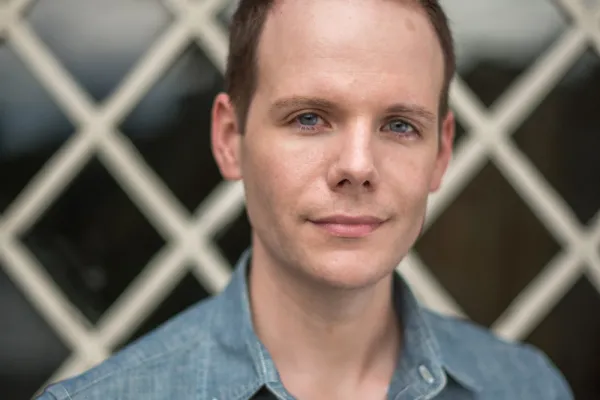Five Years Later: Reflecting on Marriage Equality
Research & Inquiry

Published June 29, 2020
Friday, June 26, marked the fifth anniversary of the Supreme Court decision in Obergefell v. Hodges—the decision that legalized marriage for same-sex couples.
What’s changed in those five years? What’s improved? In what ways did the decision miss the mark?
For insight, we checked in with Cory Albertson, a lecturer in sociology at Smith and author of “A Perfect Union? Television and the Winning of Same-Sex Marriage.” Alberston writes frequently for mainstream and scholarly publications on issues related to queer studies and social justice movements, among other things. Most recently, he authored a personal essay about the Obergefell decision for The Rumpus. At Smith, Albertson teaches courses on the family; sex and gender; and sexuality.
Why was the 2015 Supreme Court decision important?
In Obergefell, the Supreme court consolidated multiple cases from multiple states to focus on various legal practicalities of marriage—things like adoption rights of second parents, spousal recognition on death certificates, and the incongruity of states recognizing same-sex marriage licenses from other states or countries. So the decision helped achieve important practical effects.
Where did Obergefell fall short?
It’s important to remember that early LGBTQ rights groups—particularly in the 1970s, immediately after the Stonewall Riots—were fighting to disrupt heterosexual conventions, from norms around sexual practices, to gender, and to relationship structures, including monogamous marriage. But with Obergefell, the movement was co-opted by groups that were mostly cisgender and mostly white, and they sort of put all of the gay eggs into one gay basket: marriage. The Human Rights Campaign, for example, positioned marriage, by itself, as “the beginning of our fight for full equality.”
But marriage, as an institution, is inherently limited: It was meant to gain in-laws and, therefore greater access to labor, property and wealth. So, when talking about many of the bigger, practical financial issues that marriage helps, same-sex marriage has really only benefited cisgender white lesbians and gay men who already had some upward mobility. Trans folks and queers of color have long faced discrimination, be it for jobs or home loans. And we know that these are central avenues to wealth. So, positioning marriage equality as the LGBTQ civil rights issue was disingenuous because, in many ways, it only helped those who were already privileged.
Were there benefits—or drawbacks—beyond the practical?
Yes. There’s the symbolism of marriage and this idea that being “good enough” to be a part of this most sacrosanct institution that cuts across culture, religion and economics, would make it easier to gain full equality in other areas, specifically job discrimination protections and hate crime bills. And in some ways that strategy has worked. Legislatively, it certainly paved the way for the recent addition of sexual orientation and gender identity to Title VII of the 1964 Civil Rights Act. And that decision, unlike marriage equality, has the potential to really impact all members of the LGBTQ community, particularly trans and queers of color who face the most job discrimination and experience higher rates of poverty.
Has marriage equality led to increased societal acceptance?
That was the theory. We’ve seen greater LGBTQ representation in media become somewhat standardized. But we’ve actually seen measures of acceptance of the LGBTQ community go down in recent years. Last year, GLAAD released their “Accelerating Acceptance Index Report,” which asks straight folks how comfortable they are with LGBTQ folks in various scenarios. And among people 18-34, those that are “somewhat’ or “very” comfortable dropped to 45 percent. So marriage equality was important, but it has not been this golden ticket that many thought it would be.
Has life changed since Obergefell?
I think it really depends on which segment of that beautiful, diverse group known as the LGBTQ community you ask. For those members who already had greater life security—be it with a partner, and/or through a good job and good housing—Obergefell has made their lives more secure and elevated their upward mobility even more. But for those who didn’t have a lot of security, which unfortunately tends to be trans folks and queers of color, then their lives were less affected.
What does the current political climate bode for the future? Are you optimistic?
The 2016 election and the continued violence against black folks has galvanized us in ways that we haven’t seen in a generation—from the Women’s March, to #MeToo, to how the purpose of Black Lives Matter has finally punctured the mainstream. And all of this is encouraging.
I am an optimist at heart—in large part because of the students I teach at Smith. I see their passion. I see their willingness to learn. I see their willingness to use their voice. I also know that, statistically, they are the most accepting generation we’ve ever had. I literally get to interact with the future Every. Single. Day. When I leave my students and when I leave the Smith campus, I’m always left with hope.